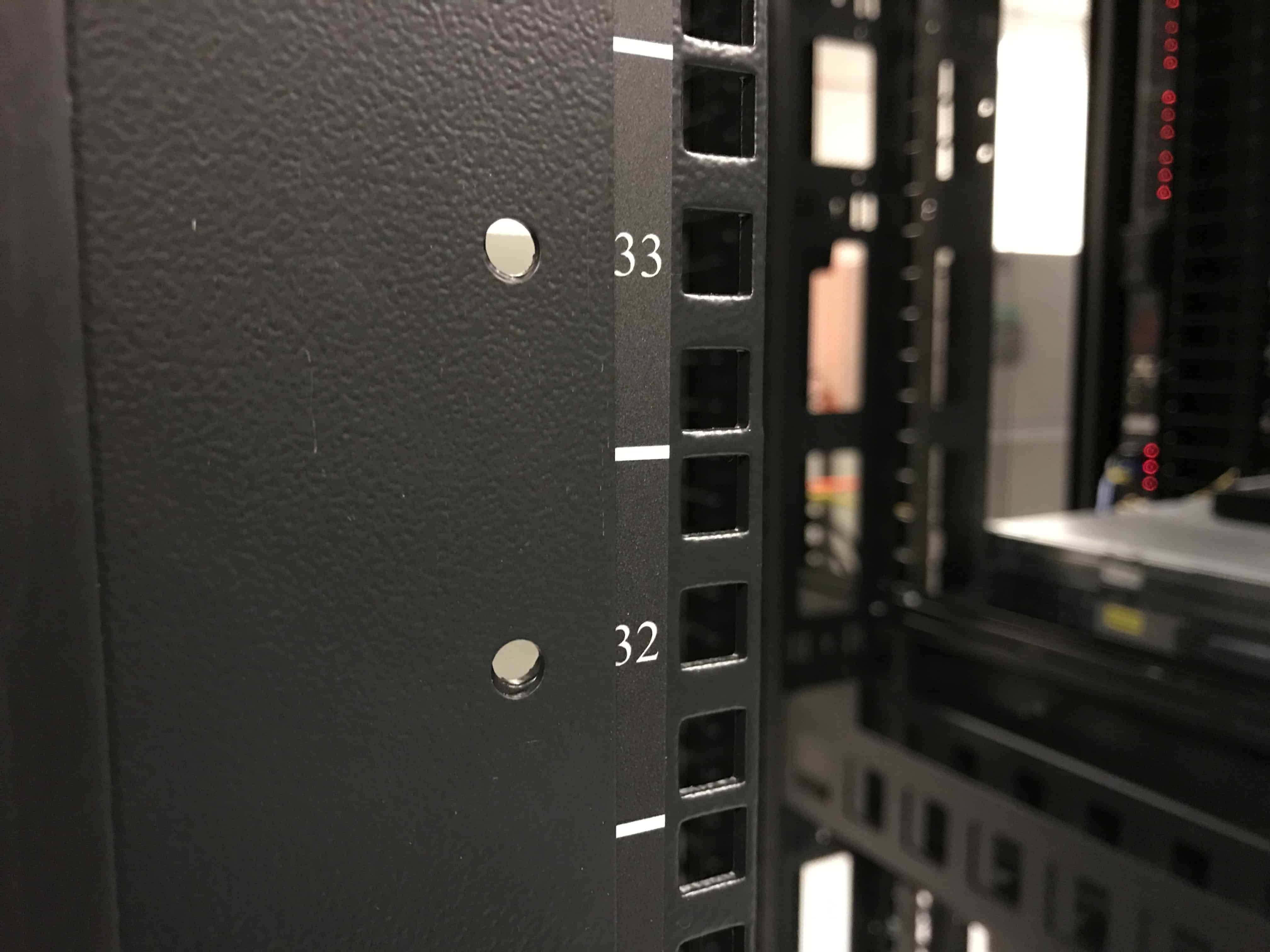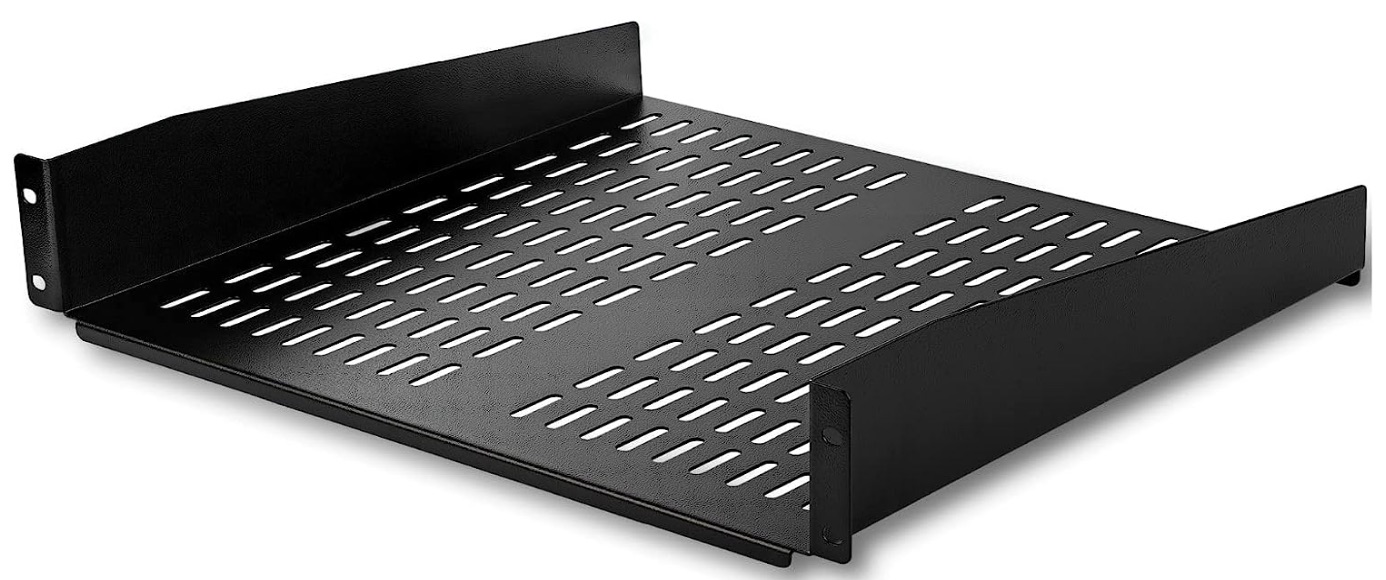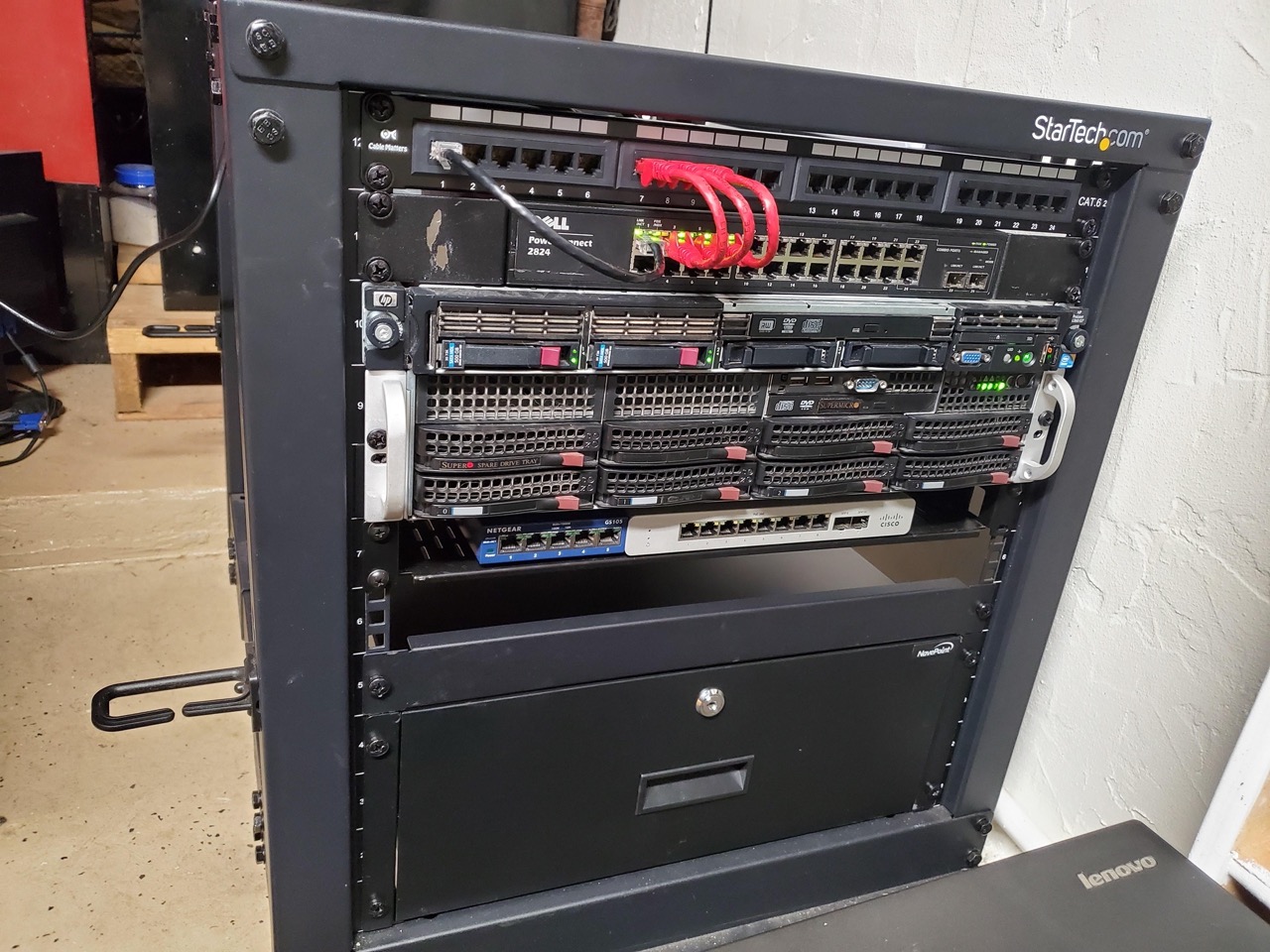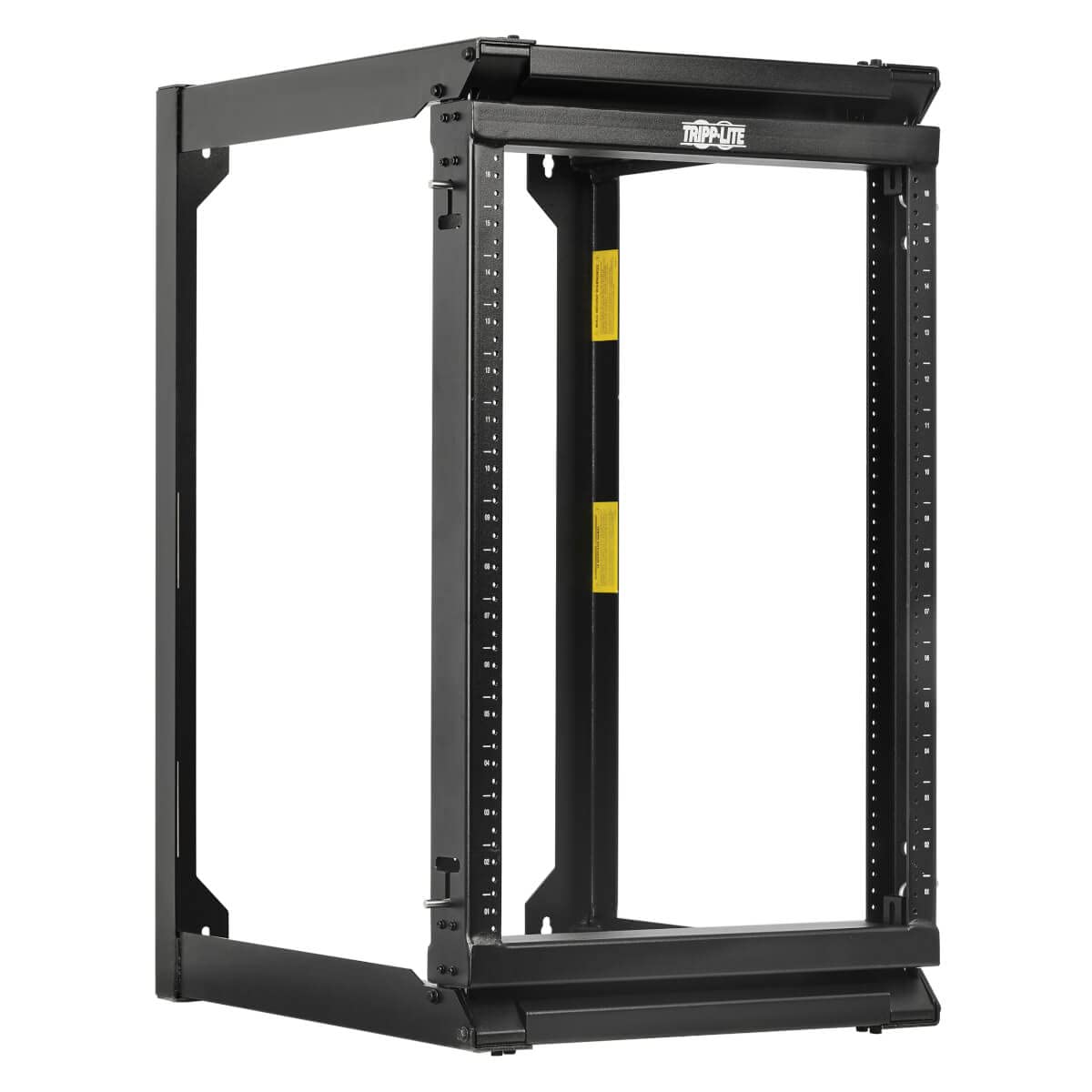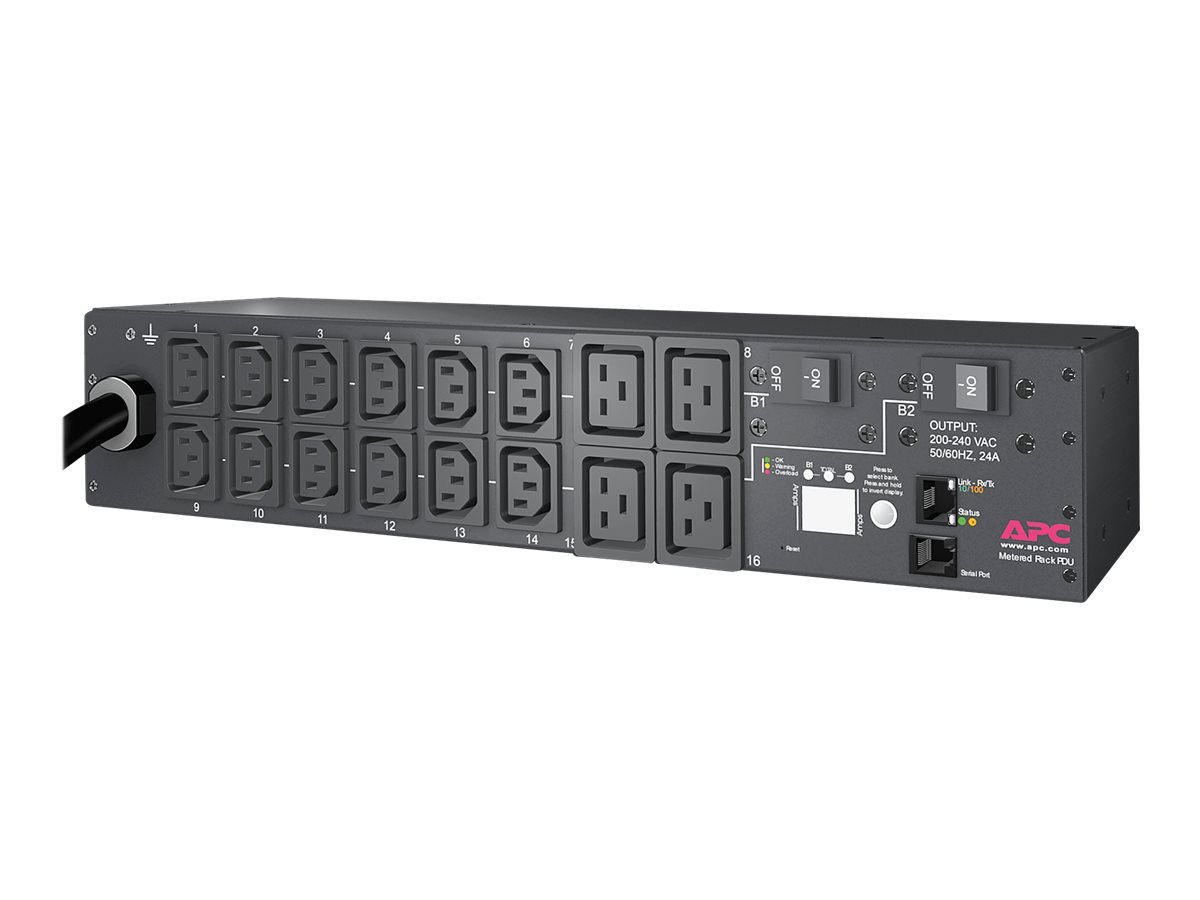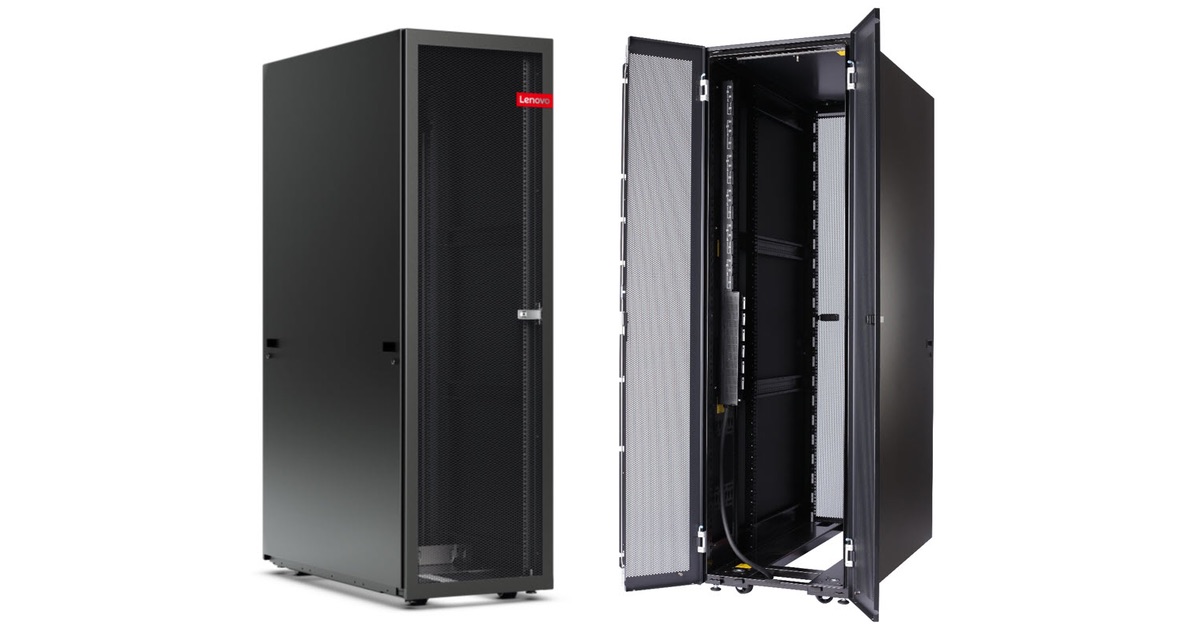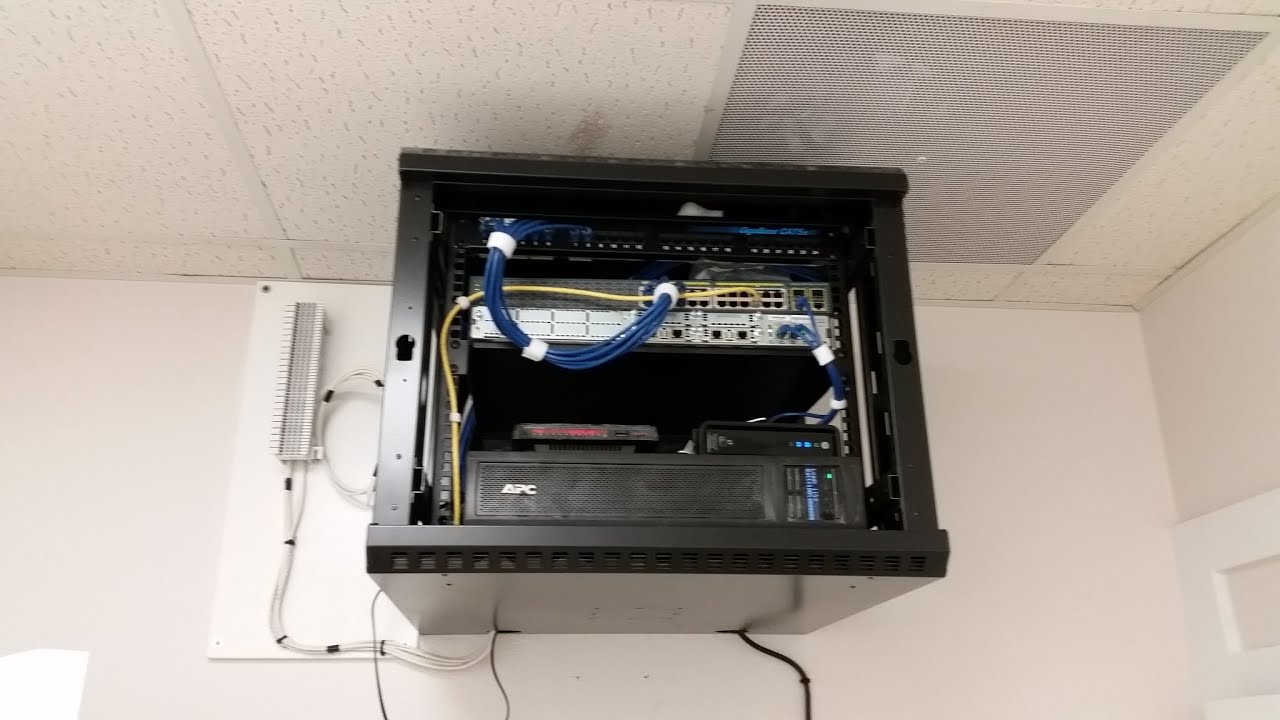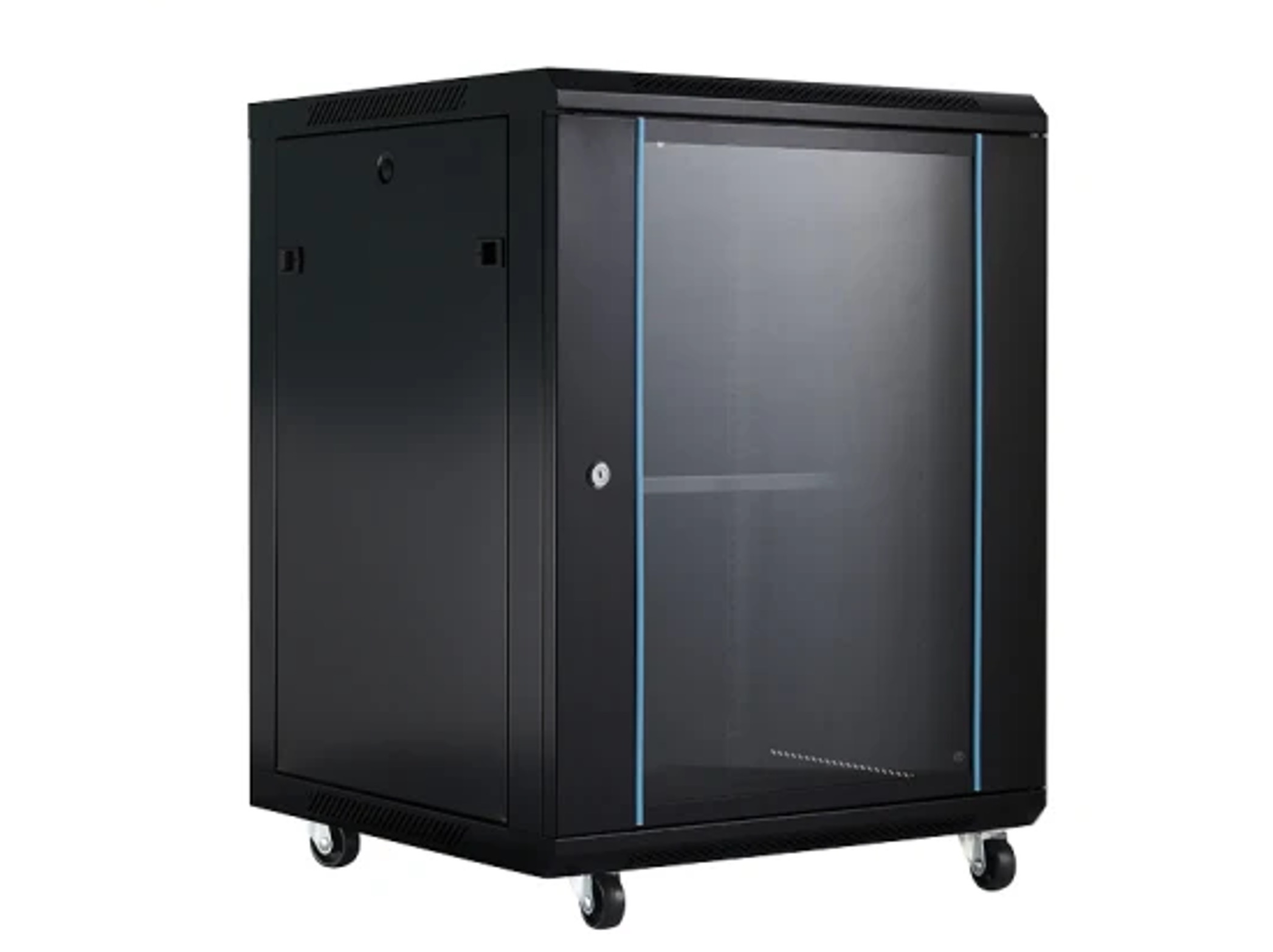Introduction
Welcome to the world of server racks and data centers, where space efficiency and organization are paramount. If you’ve ever come across the acronym “U” while browsing through websites or discussing server rack specifications, you may have wondered what it stands for and how it relates to server rack dimensions. In this article, we will delve into the meaning of “U” in the context of server racks and explore its significance in the world of IT infrastructure.
As technology continues to advance, businesses and organizations are faced with the challenge of managing increasingly complex and diverse IT systems. Server racks play a pivotal role in housing and organizing these systems, providing a centralized location for servers, networking equipment, and other critical components.
So, what exactly does “U” stand for when we talk about server racks? In simple terms, “U” refers to a standard unit of measurement used to define the height of equipment that can be mounted in a server rack. This unit of measurement enables technicians and IT professionals to select the appropriate size of server rack and ensure that all equipment fits snugly and securely.
Understanding the concept of “U” is essential for anyone involved in the design, installation, or maintenance of server racks. By having a clear grasp of this measurement system, you can optimize your use of space and ensure efficient utilization of your server rack infrastructure.
In the following sections, we will explore the standard dimensions of a “U” and its common uses in server racks. We will also discuss the benefits of using “U” measurements and touch upon the types of equipment that are typically measured in “U”. Additionally, we will provide guidance on how to calculate rack unit size and highlight important factors to consider when selecting the appropriate rack unit size for your specific needs.
Definition of “U”
“U” is an abbreviation for “rack unit” and is a standardized unit of measurement used to describe the vertical space within a server rack. It represents the height of a piece of equipment or device that can be mounted in the rack.
A “U” is defined as 1.75 inches or 44.45 millimeters in height. This standardized measurement allows for consistent sizing and compatibility across various server rack manufacturers and models.
The concept of “U” originated from the Telecom Equipment Cabinet Standard set by the Electronic Industries Association (EIA). This standard was later adopted by the International Electrotechnical Commission (IEC) and became globally recognized.
Each server rack consists of a series of vertical posts or rails with evenly spaced holes. These holes are used to mount equipment and devices at specific heights expressed in “U”. For example, a server rack that is 42U in height has 42 units of vertical space available for equipment installation.
The “U” measurement system simplifies the specification and selection of server racks and equipment. It ensures that racks from different manufacturers are compatible and that equipment can be easily interchanged or replaced without any issues.
It’s important to note that the “U” measurement refers to the usable height within the rack and does not include any additional space for cable management or ventilation. These factors must be taken into account when planning and designing the layout of a server rack.
In the following sections, we will explore the practical implications and benefits of using “U” measurements in server racks, as well as the types of equipment commonly measured in “U”. So, let’s dive in and discover how this standardized unit of measurement contributes to efficient and organized IT infrastructure!
Standard Rack Unit Dimensions
Server racks are available in various sizes, with the most common being 42U and 48U. While these sizes are prevalent, server racks can range anywhere from 4U to 58U or even higher, depending on specific requirements.
Each server rack unit, also known as a “U”, has a standardized dimension of 1.75 inches or 44.45 millimeters in height. This consistent measurement allows for easy compatibility and interchangeability of equipment within different rack models.
When it comes to width and depth, server racks generally follow industry standards to ensure compatibility. The width of a standard server rack is typically 19 inches or 482.6 millimeters. This width is based on the width of electronic equipment, such as servers and switches, that are commonly used in data centers and IT environments.
The depth of a server rack can vary depending on the specific model and manufacturer. However, the most common depth ranges from 600mm to 1100mm. It’s important to consider the depth requirements of your equipment when selecting a server rack to ensure proper fit and clearance.
Server rack units are typically numbered from the bottom up, starting with 1U at the bottom and increasing as you move upwards. This numbering system makes it easy to identify the exact location of equipment within the rack and facilitates efficient cable management.
It’s worth noting that the physical measurements of a server rack may slightly differ between manufacturers, but the standardized “U” measurement remains consistent. When purchasing a server rack, it is important to check the manufacturer’s specifications for the exact dimensions to ensure compatibility with your equipment and space constraints.
The standardization of rack unit dimensions allows for seamless integration of equipment from different manufacturers. This means that you can mix and match equipment from various vendors and be confident that they will fit properly within the server rack.
In the next sections, we will explore the practical applications of “U” measurements in server racks and the benefits they bring to IT infrastructure. So, let’s keep exploring and discover how “U” measurements revolutionize the organization and efficiency of server rack installations!
Common Uses of “U” in Server Racks
The “U” measurement system in server racks serves several practical purposes and provides numerous benefits to IT infrastructure. Let’s explore some of the common uses of “U” in server racks:
- Equipment Sizing and Compatibility: One of the primary uses of “U” measurements is to determine the height of equipment that can be installed in a server rack. By knowing the number of rack units needed for each piece of equipment, IT professionals can ensure compatibility and plan for efficient use of space within the rack.
- Space Optimization: With the standardized “U” measurement, server rack space can be utilized efficiently. Precise measurements allow IT administrators to optimize the placement of equipment, minimizing wasted space and maximizing the number of devices that can be installed in the rack.
- Easy Cable Management: The “U” measurement system simplifies cable management within server racks. Since each rack unit has a defined height, it becomes easier to route and organize cables within the allotted space, reducing clutter and ensuring good airflow for efficient cooling.
- Equipment Location Identification: Using “U” measurements, IT professionals can easily identify the location of specific equipment within a server rack. This is particularly beneficial when troubleshooting or performing maintenance, as the exact height of the equipment can be quickly determined.
- Scalability and Expansion: The “U” measurement system provides scalability in server rack installations. As businesses grow and require additional equipment, it is easy to add or replace devices of the same height in the rack without compatibility concerns. This allows for seamless expansion and future-proofing of IT infrastructure.
- Compatibility with Rack Accessories: Server rack accessories such as shelves, drawers, and cable management panels are also designed to fit specific “U” measurements. This ensures that these accessories can be easily integrated into the rack without any compatibility issues.
The “U” measurement system has become a standard in the IT industry due to its practicality and efficiency. It enables IT professionals to effectively plan, organize, and manage server racks, resulting in streamlined operations, improved maintenance procedures, and enhanced scalability.
In the next sections, we will discuss the benefits of using “U” measurements and explore the types of equipment commonly measured in “U”. So, let’s continue our exploration and discover how the “U” measurement system contributes to the success of IT infrastructure!
Benefits of Using “U” Measurements
The use of “U” measurements in server racks offers several benefits that contribute to the efficiency and effectiveness of IT infrastructure. Let’s explore some of the key advantages of using “U” measurements:
- Standardization: The “U” measurement system provides a standardized unit of measurement for server rack height. This standardization ensures compatibility and interoperability between different manufacturers and models. IT professionals can confidently mix and match equipment from various vendors, knowing that they will fit precisely within the designated rack units.
- Space Efficiency: “U” measurements allow for precise utilization of space within server racks. IT administrators can plan and allocate the right amount of rack units for each piece of equipment, minimizing wasted space and maximizing the number of devices that can be installed. Efficient space utilization not only saves physical space but also reduces power and cooling requirements.
- Easy Equipment Management: With the “U” measurement system, managing and maintaining server rack equipment becomes much easier. The standardized measurements enable quick identification of equipment locations, simplifying troubleshooting, upgrades, and routine maintenance. IT professionals can easily replace or add new equipment without any compatibility concerns.
- Flexibility and Scalability: The use of “U” measurements allows for flexibility and scalability in IT infrastructure. As businesses grow or technology requirements change, additional equipment can be seamlessly integrated into existing server racks. IT professionals can easily expand or rearrange equipment within the rack, ensuring future-proofing and adaptability to evolving needs.
- Efficient Cable Management: The consistent “U” measurements facilitate effective cable management within server racks. IT professionals can route and label cables more efficiently, reducing cable clutter, enhancing airflow for cooling, and simplifying troubleshooting. The organized cable layout promotes better maintenance practices and reduces the risk of cable-related issues.
- Cost Savings: By using “U” measurements, organizations can optimize the use of server rack space and avoid the unnecessary expense of larger racks or multiple smaller racks. The efficient use of space translates into cost savings in terms of rack infrastructure, power consumption, cooling requirements, and overall data center footprint.
The adoption of “U” measurements in server racks provides numerous benefits that promote efficient and effective IT infrastructure management. The standardization, space efficiency, equipment management ease, flexibility, cable management improvements, and cost savings all contribute to streamlined operations and enhanced scalability.
In the following sections, we will delve into the types of equipment commonly measured in “U” and discuss the calculation of rack unit size. So, let’s continue our exploration and uncover more about the practical applications of “U” measurements in server racks!
Types of Equipment Measured in “U”
A wide range of equipment can be measured in “U” when it comes to server racks. The “U” measurement serves as a standard unit to determine the height of various devices and components that are commonly found in IT infrastructure setups. Let’s explore some of the common types of equipment measured in “U”:
- Servers: Servers are the backbone of any IT infrastructure. They range in size from 1U to multiple U, depending on their form factor and specifications. “U” measurements help determine the height of server units, ensuring that they fit securely and efficiently within the server rack.
- Networking Equipment: Networking equipment, such as switches and routers, is essential for connecting devices and ensuring smooth data flow within a network. These devices are often measured in “U” to determine their height for proper installation in server racks.
- Power Distribution Units (PDUs): PDUs play a crucial role in distributing power to various equipment within a server rack. They are available in different sizes, usually measured in “U”, to fit specific rack space requirements and facilitate organized power management.
- Storage Devices: Storage devices, including disk arrays and network-attached storage (NAS) units, are commonly measured in “U” to determine their size and fit within the server rack. Storage devices can range from a few U to larger sizes, depending on the capacity and form factor.
- Backup Devices: Backup systems, such as tape drives or robotic libraries, are measured in “U” to determine their size and fit within the server rack. These devices provide crucial data protection and disaster recovery capabilities.
- Monitoring and Management Equipment: Various monitoring and management devices, such as server console switches, monitor arms, KVM switches, and remote management tools, are commonly measured in “U”. These devices assist in efficient remote management and monitoring of servers and network devices.
- Blade Chassis: Blade servers and their associated chassis are often measured in “U” to determine the height of the chassis unit. Blade servers are compact and modular, allowing for multiple servers to be housed in a single chassis unit and efficiently installed in a server rack.
The ability to measure and plan for equipment in “U” units ensures compatibility and efficient utilization of the available rack space. IT professionals can select the appropriate rack size and organize their equipment to maximize efficiency, minimize wasted space, and streamline maintenance and management procedures.
In the next section, we will explore how to calculate the rack unit size to determine the height requirements for various equipment. So, let’s continue our journey and unravel the calculations behind rack unit sizes!
How to Calculate Rack Unit Size
Calculating the rack unit size is a straightforward process that involves determining the height of the equipment you plan to install in a server rack. Here’s how you can calculate the rack unit size:
- Measure the Height of the Equipment: Start by measuring the height of the equipment you intend to mount in the server rack. Use a tape measure or ruler to accurately determine the vertical dimension of the device. Common heights include 1U, 2U, 3U, and so on.
- Convert the Height to Rack Units: Once you have measured the height of the equipment, divide that measurement by 1.75 inches (the height of one “U”). This will give you the number of rack units required for the equipment. For example, if the measured height is 3.5 inches, dividing by 1.75 inches will result in 2 “U”.
- Consider Additional Space: It’s important to account for any additional space needed for cable management, ventilation, and potential future expansion. Adding a few extra “U” units to accommodate these factors is advisable to ensure proper spacing and flexibility within the server rack.
- Calculate the Total Rack Unit Size: To calculate the total rack unit size, add up the “U” units needed for each piece of equipment you plan to install in the server rack. This will give you the overall rack unit size required to accommodate your equipment.
It’s worth noting that some equipment may have non-standard heights that are not divisible by 1.75 inches. In such cases, it’s best to round up to the nearest whole “U” unit to ensure that the equipment fits securely within the rack.
By accurately calculating the rack unit size, you can select a server rack that provides sufficient space for your equipment and allows for proper airflow, cable management, and future expansion. This ensures a well-organized and efficient IT infrastructure.
In the next section, we will highlight important factors to consider when selecting the appropriate rack unit size for your specific needs. So, let’s dive into the considerations that will help you make an informed decision!
Things to Consider When Selecting Rack Unit Size
When selecting the appropriate rack unit size for your specific needs, there are several important factors to consider. These factors will help ensure that your equipment fits properly, and your server rack can accommodate your current and future requirements. Here are some key considerations:
- Equipment Height: Measure the height of each piece of equipment you plan to install in the server rack. Consider both the current and potential future equipment to ensure that the rack unit size can accommodate your needs.
- Airflow and Cooling: Proper airflow and cooling are crucial for equipment reliability and longevity. Leave sufficient space between equipment to allow for adequate airflow and consider additional rack units for proper ventilation. This helps prevent overheating and ensures optimal performance.
- Cable Management: Effective cable management is essential for reducing clutter, simplifying troubleshooting, and maintaining a clean and organized rack. Consider the space required for routing and managing cables, and allocate enough rack units for cable management accessories such as cable management panels.
- Future Expansion: Anticipate future growth and expansion when selecting the rack unit size. Choose a size that can accommodate potential additional equipment to avoid the need for rack replacement or upgrades in the near future.
- Accessibility: Consider the ease of access to equipment within the rack. Ensure that there is enough space between devices to allow for easy installation, maintenance, and replacement without causing interference or risking damage to neighboring equipment.
- Weight Capacity: Take into account the weight capacity of the server rack, especially if you plan to mount heavy equipment. Ensure that the selected rack unit size can support the weight of all equipment and any additional accessories or shelves you may need.
- Compatibility: Check the compatibility of the rack unit size with your preferred server rack manufacturer. Different manufacturers may have slight variations in rack dimensions, so ensure that your equipment is compatible with the chosen rack unit size.
By considering these factors, you can make an informed decision when selecting the rack unit size that best suits your needs. Taking into account equipment height, airflow, future expansion, cable management, accessibility, weight capacity, and compatibility ensures a well-designed and efficient server rack setup.
Now that we have explored the considerations for selecting rack unit size, let’s wrap up our discussion and summarize the key points we’ve covered so far.
Conclusion
In this article, we have explored the meaning and significance of “U” in server racks. The “U” measurement system provides a standardized unit of measurement for the height of equipment that can be mounted in a server rack. By understanding and utilizing “U” measurements, IT professionals can optimize space efficiency, ensure compatibility, and simplify equipment management within server racks.
We discussed the standard dimensions of a rack unit, which is 1.75 inches or 44.45 millimeters in height. This consistent measurement allows for seamless compatibility across different server rack models and manufacturers.
We also explored the common uses of “U” in server racks, including equipment sizing and compatibility, space optimization, cable management, equipment location identification, scalability, and compatibility with rack accessories. The benefits of using “U” measurements in server racks were highlighted, such as standardization, space efficiency, easy equipment management, flexibility, cable management improvements, and cost savings.
Furthermore, we discussed the types of equipment commonly measured in “U”, such as servers, networking equipment, power distribution units (PDUs), storage devices, backup devices, monitoring and management equipment, and blade chassis. Understanding the equipment measured in “U” allows for proper planning and utilization of server rack space.
We learned how to calculate rack unit size by measuring the height of equipment and converting it into “U” units. Considering factors such as equipment height, airflow, cable management, future expansion, accessibility, weight capacity, and compatibility is crucial when selecting the appropriate rack unit size for your specific needs.
By making informed decisions regarding rack unit size, IT professionals can create an organized and efficient server rack setup that optimizes space, promotes proper airflow and cooling, simplifies equipment management, and allows for future scalability.
So, in your journey of working with server racks and IT infrastructure, remember the importance of “U” measurements and their impact on space management and equipment compatibility. With this knowledge, you can effectively navigate the world of server racks and create a well-organized and efficient data center environment.







